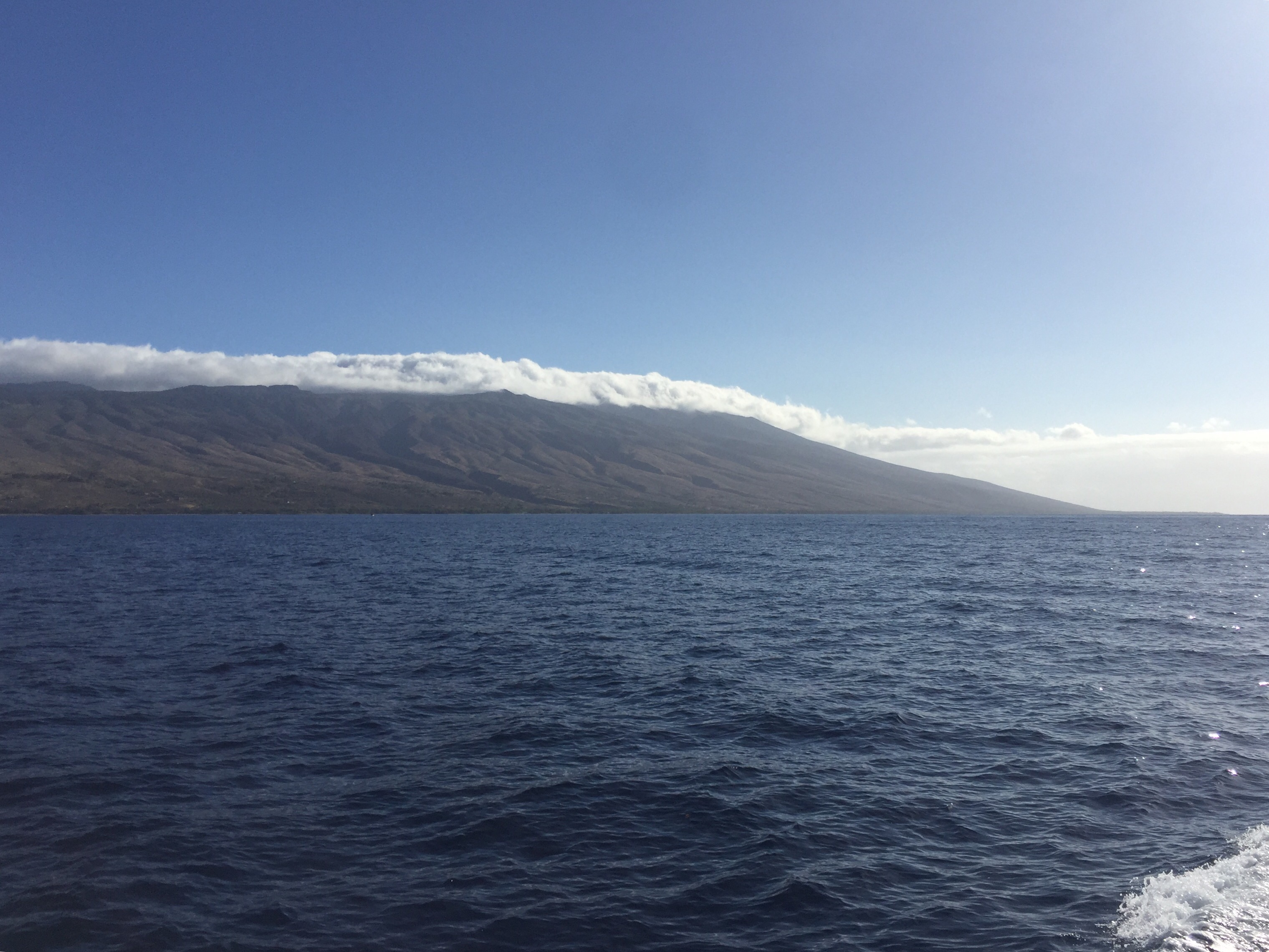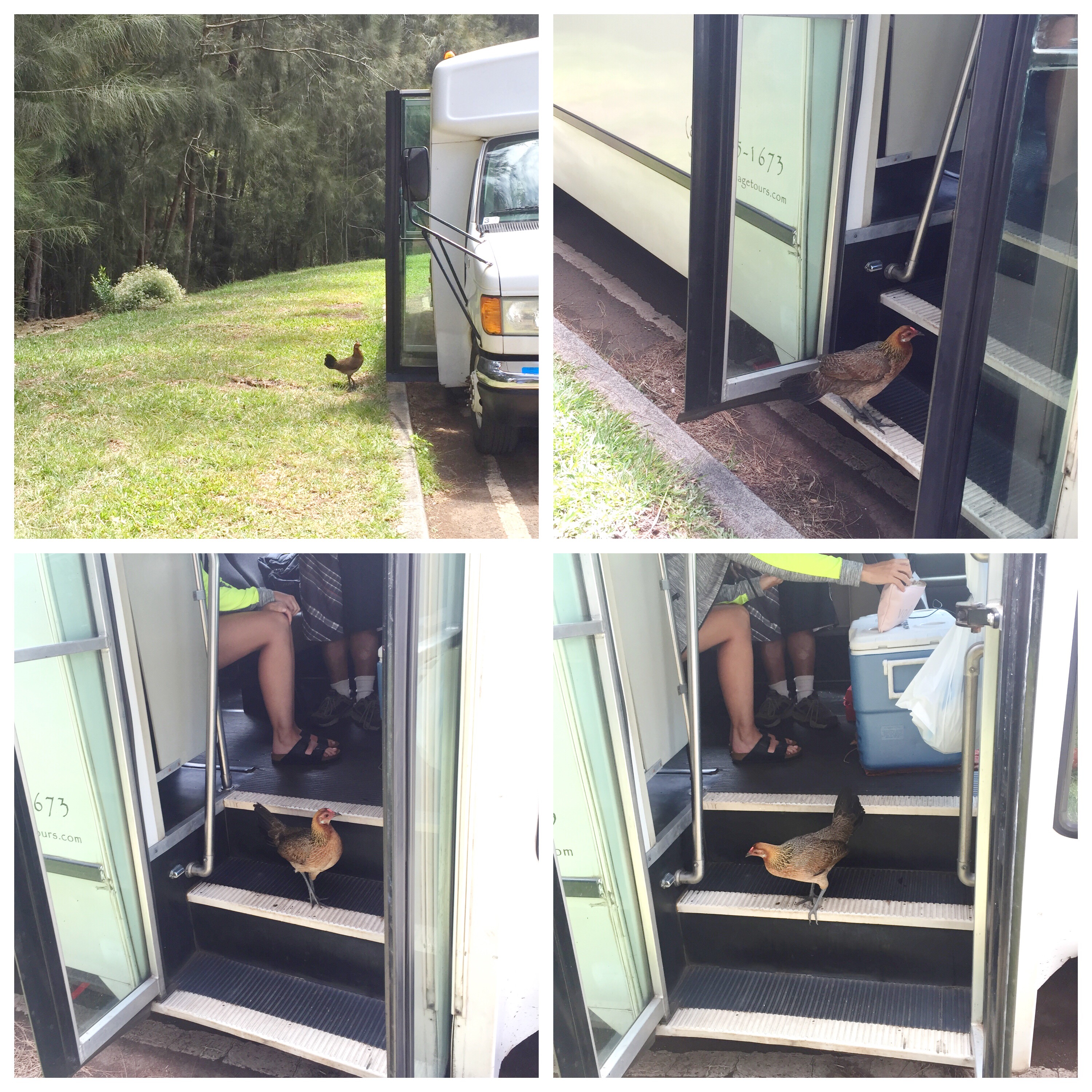One of the reasons we wanted to visit Maui again was its proximity to the islands of Moloka’i and Lana’i, both of which are too small for full vacations on their own, but definitely worth a day trip to each.
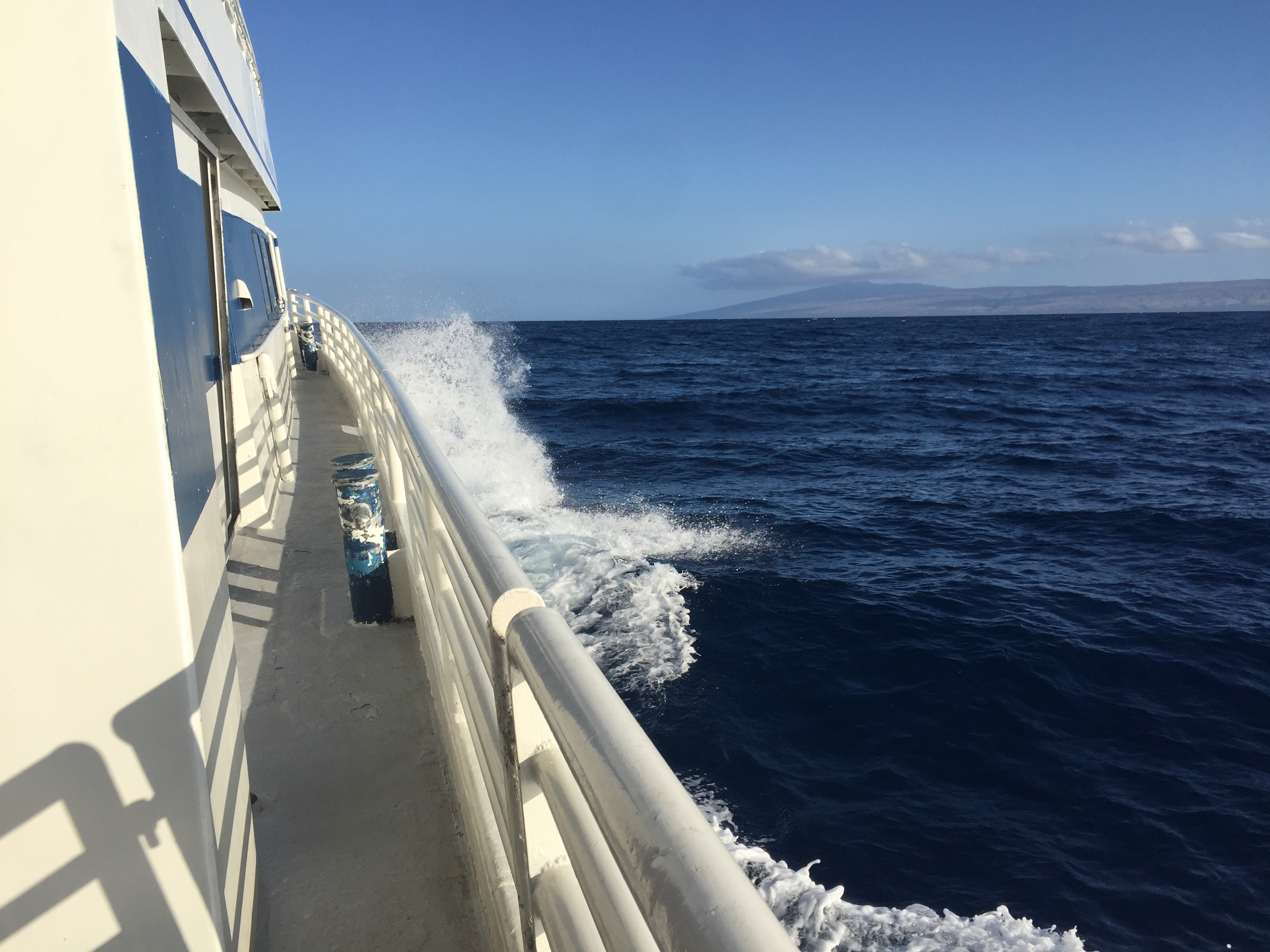 The ferry ride from Maui to Molokai started off with ominous warnings from the captain: “It’s a bit windy, so it’ll be a bumpy ride,” and “if you are outside on the upper deck, you will get wet.”
The ferry ride from Maui to Molokai started off with ominous warnings from the captain: “It’s a bit windy, so it’ll be a bumpy ride,” and “if you are outside on the upper deck, you will get wet.”
Indeed, it was a bumpy ride, and longer than we expected. Nowhere on the ferry website does it tell you how long the journey takes, because it all depends on the weather and sea conditions. It took us an hour and 45 minutes to get there, but a little over two hours to get back. The body of water between the islands is called the Pailolo Channel (“pai” means “splash,” and “lolo” means “crazy,” so the name literally translates to “Crazy Splash”) because of the wind tunnel that is formed between the West Maui Mountains and Kamakou, the tall mountain on the eastern side of Moloka’i.
Crazy splashes aside, we got a chance to see whales breaching on both sides of the boat, and there was even a bunch of turtles swimming alongside us for a while (I didn’t get a chance to see them, and since the husband has now nicknamed me “Turtlebane,” he says that it’s just as well I didn’t scare them off).
Our tour guides met us at the harbor, and off we went on our guided “Ali’i” tour. A rather surprising first stop was at the coffee shop, but we got a briefing about how the coffee is machine-harvested on Moloka’i because of the terrain, and then we got an opportunity to shop and taste the local coffee (it’s really good, but still not as good as Kona). One of our tour guides sat down and started singing with a local…I couldn’t tell if it was spontaneous or part of the tour, but either way, it was wonderful, and set the mood for a really peaceful day.
The next stop was the R.W. Meyer Sugar Mill and Moloka’i Museum. It was fine, but a little dry, since we had to watch a 12-minute video. Not that the video wasn’t informative — it was! But compared to the other parts of the tour, it felt a little more like a history lesson and less like immersion in the island.
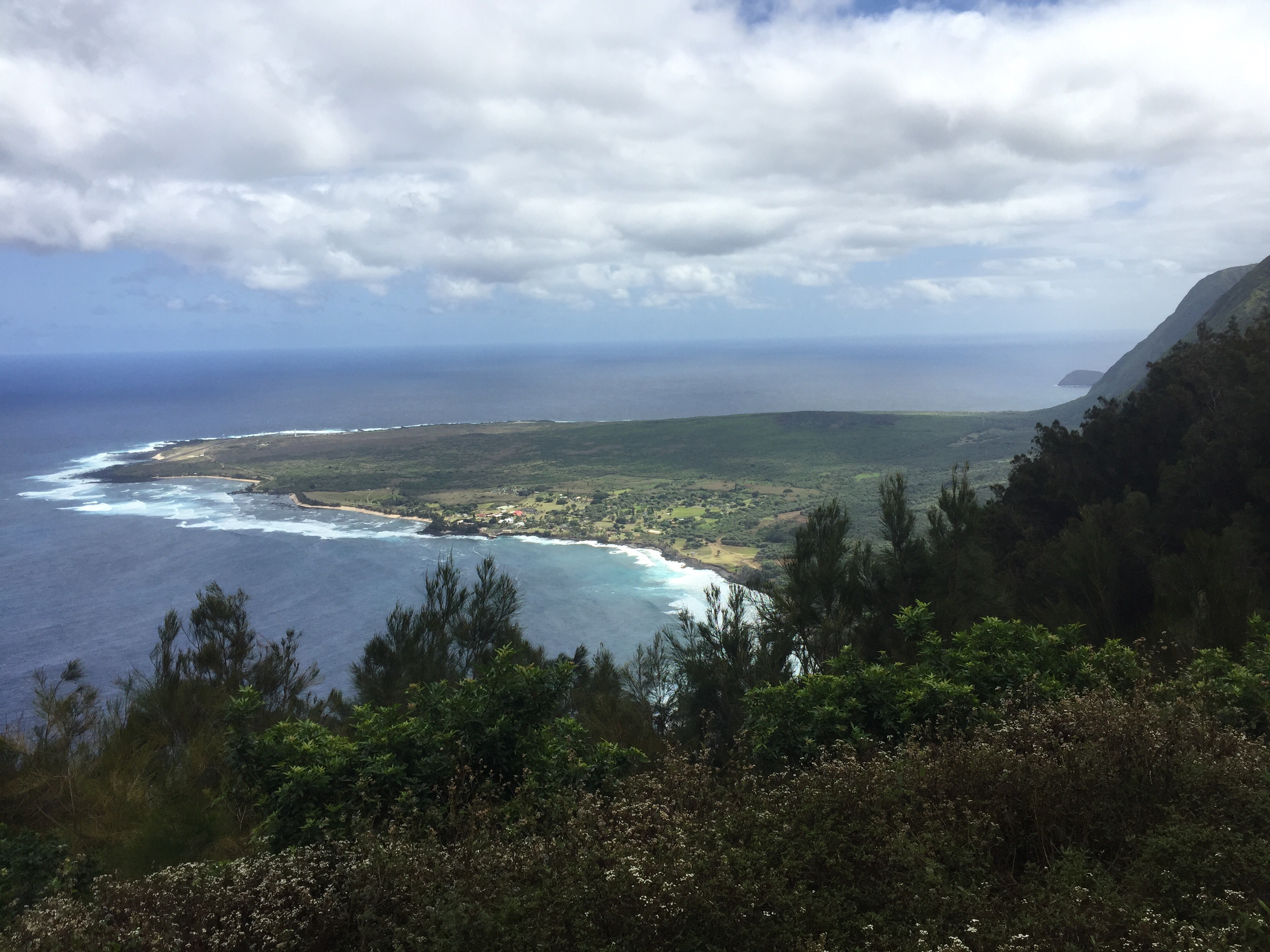
We also got a chance to hike up to Phallic Rock, another spiritual spot thought to hold great fertility power. I did take pictures (because why not), but am not going to post them publicly out of respect for those who do consider it a holy place. But the rock is, as one might expect, quite phallic. The hike itself was almost like a walk through an enchanted forest.
And the spirits were so alive in the forest that a chicken tried to get onto our bus. I guess he was hitchhiking.
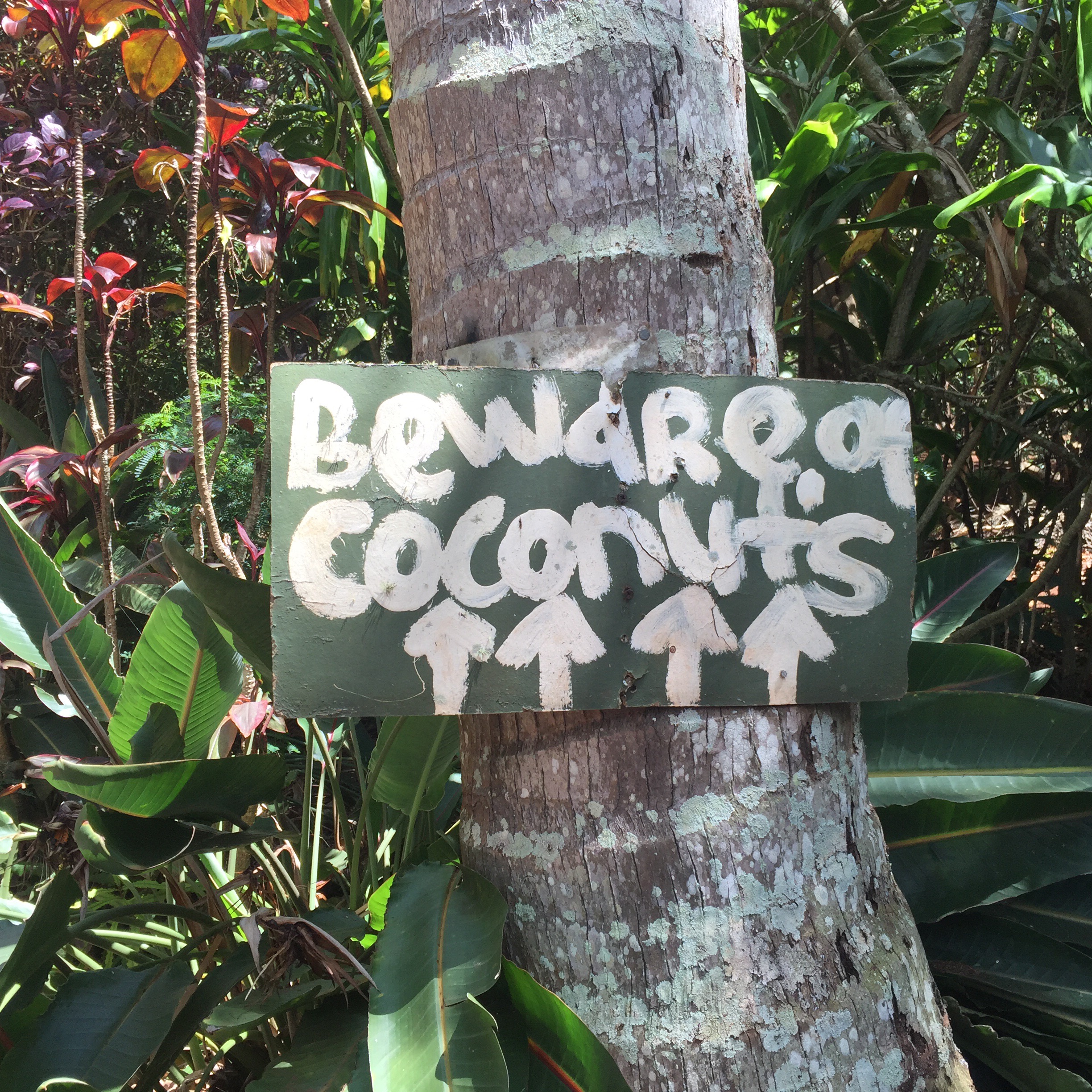
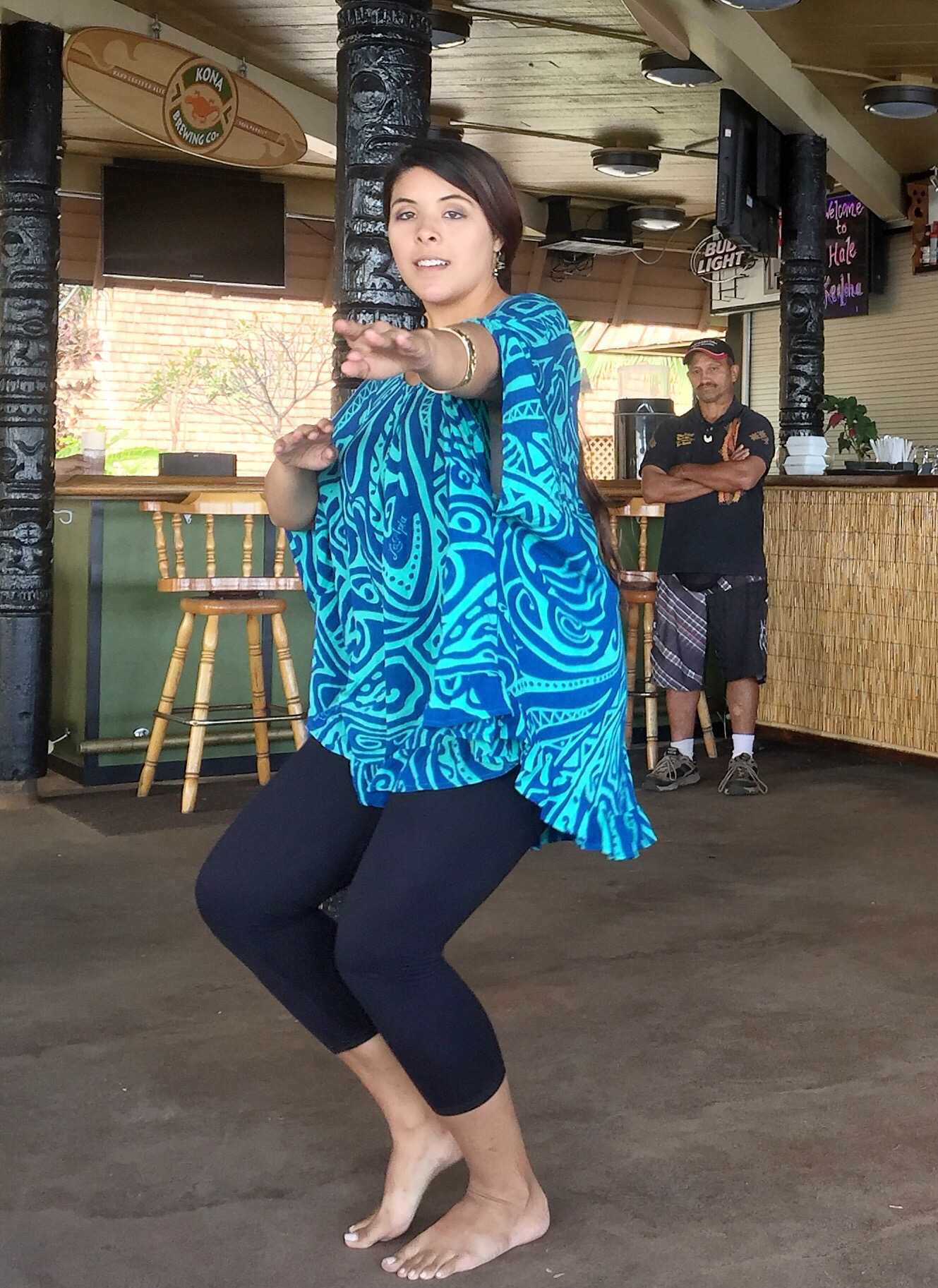 It was finally lunch time, and we stopped at the historic Hotel Molokai (built in the 1920s and has retained its charm) for sandwiches (I got a salad because I asked for a vegetarian option). Another one of our tour guides danced the hula for us as we ate, and she danced with such sincerity and openness that it made me cry.
It was finally lunch time, and we stopped at the historic Hotel Molokai (built in the 1920s and has retained its charm) for sandwiches (I got a salad because I asked for a vegetarian option). Another one of our tour guides danced the hula for us as we ate, and she danced with such sincerity and openness that it made me cry.
The rest of the tour was dedicated to Father Damien and the churches he built. They are lovely churches, full of a welcoming spirit. I’m not Catholic, but it was incredibly clear that Father Damien’s teachings of compassion, acceptance, and caretaking has percolated throughout the community. All of our guides certainly radiated that kind of love. I suppose that is why Moloka’i is called the Friendly Island.
Too soon, it was time to return to Maui. The return trip was much more choppy than going to Moloka’i (we were going against the wind), and because we were outside for the fresh air (it helps with the seasickness), we got soaked. Some consolation was that we got to see plenty more whales on the way home.

